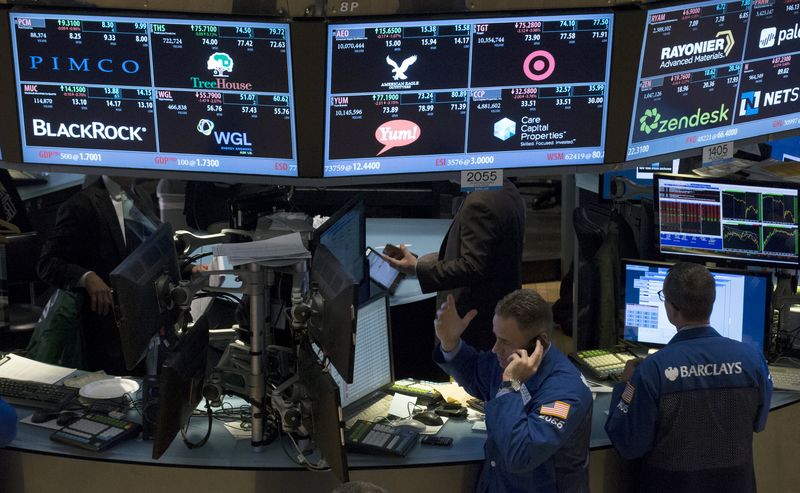(Bloomberg) -- Small-cap shares are a good hedge for potential downturns, volatility strategists say. Credit Suisse (SIX:CSGN) Group AG adds that investors who aren’t “feeling” Bernie Sanders’s prospects risk being blindsided by the U.S. election.
But overall, stock swings shouldn’t impress.
UBS Group AG strategist Stuart Kaiser predicts realized volatility on the S&P 500 Index will drop from about 19% in the first half of the year to 12% in the second half as growth trends turn positive and inflation momentum goes negative. Credit Suisse strategist Mandy Xu says it’ll average 13% over 2020 given that the Federal Reserve is on hold and likely to ease further if downside risks materialize. The VIX’s mean will be 15, Xu predicts, down slightly from 15.4 in 2019.
“Policy risks or a more significant growth slowdown are needed to shift volatility notably higher,” Kaiser wrote in his 2020 outlook Wednesday.
That doesn’t mean they see a boring year.
“While trade risk has receded, geopolitical risks have emerged,” Xu wrote on Monday. “From the 2020 U.S. election to ongoing tensions in the Middle East, a number of catalysts could drive the VIX to excess of 25.”
Xu and Kaiser like hedges on the iShares Russell 2000 exchange-traded fund. A slowdown in the economy could have a bigger effect on shares of small companies, which are highly cyclical and affected by trade tensions, Kaiser said, adding that his firm’s growth outlook for the first half of the year is below consensus.
Cantor Fitzgerald LP chief market strategist Peter Cecchini agrees.
“We not only prefer Russell 2000 put spreads to the S&P 500,” he wrote Thursday, “we are now high conviction that long-ish dated Russell put spreads are a must to any high-yield or equity portfolio with significant long exposure. The volatility surface allows hedged investors to effectively implement downside strategies in risk asset markets, which have generally lost their minds.”
Tallbacken Capital Advisors LLC’s Michael Purves, however, advocates hedges on the VanEck Vectors Semiconductor ETF or the Technology Select Sector SPDR Fund as opposed to the Russell 2000 ETF. Small caps are among sectors that “have a lot of catch-up to do,” he said Thursday, while there are hints of “an early stage of a pivot” lower in momentum for semiconductors.
Trading the Election
Then there’s the U.S. election, which Kaiser says is “more tactical than structural” as a market event. He recommends trades like one- to three-month puts on the S&P 500.
“We don’t expect the election alone to drive a regime shift in realized volatility,” he wrote. “We see the election as more of a tactical trade in the run-up to Election Day.”
Xu points particularly to the Democratic primary as a potential surprise, given that volatility appears to be more affected by Elizabeth Warren’s poll numbers than those of Sanders, who is currently in a strong position in surveys.
Volatility markets are “yet to feel the Bern,” she wrote, noting that long-dated volatility on assets like managed-care stocks “normalized with Warren’s fall in the polls. Yet investors seem to be forgetting about Bernie…”
Trades from UBS include:
- Upside in Germany or Hong Kong in case of a risk/growth rebound
- Go long the Japanese yen in case U.S. growth slows and risk markets come under pressure
- Short oil volatility; selling upside on United States Oil Fund (NYSE:USO) “is attractive”
- Sell a June put on the Invesco QQQ Trust Series 1 to buy a call spread on the firm’s view of improving margin headwinds and strong earnings growth
- For a cheap upside play, buy the S&P 500 June 103% call contingent on the SPDR Gold Shares (NYSE:GLD) fund being above 103% at expiration
- For a macro risk-off hedge, try a June Euro Stoxx 50 95% put contingent on the euro/dollar pair being below 1.09, as that the region’s equities and currency tend to move together during periods of market stress
